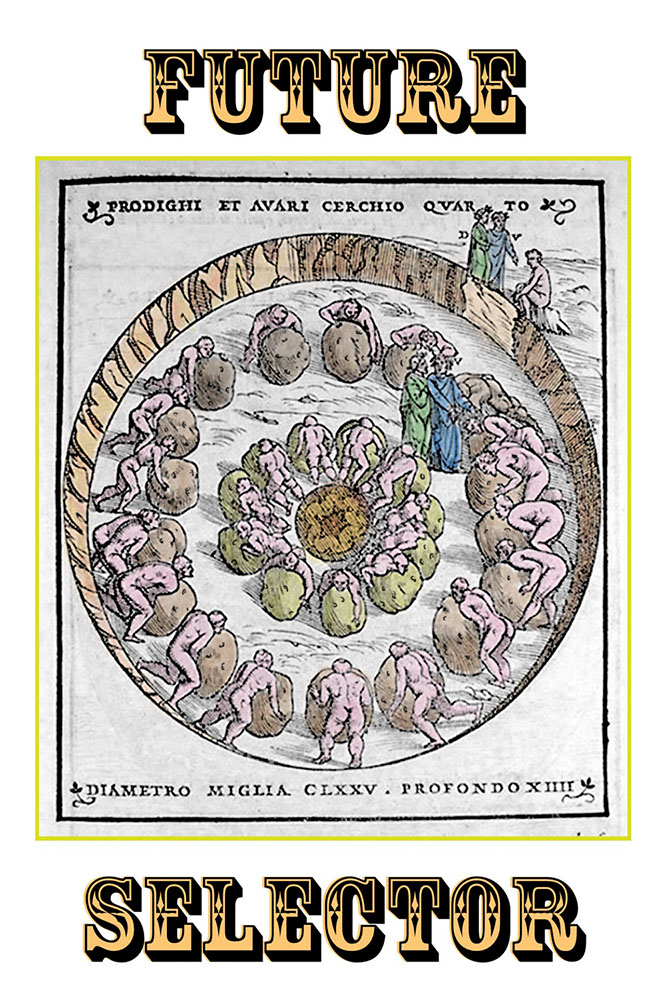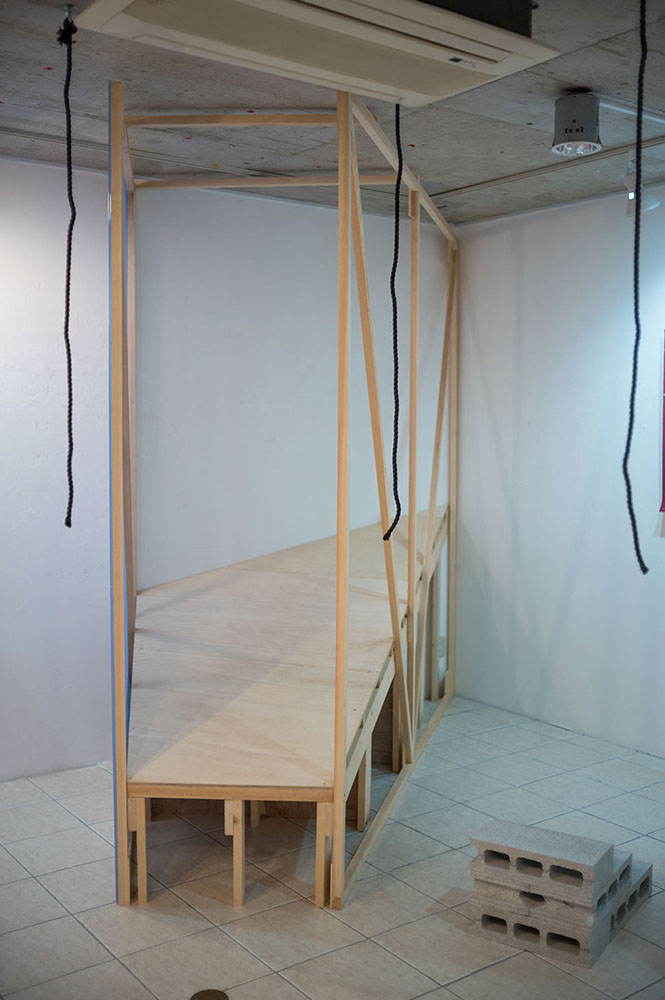
Omotesando Garo + Musee F, Tokyo, Aug. 31-Sept. 12, 2020
The future is selecting our now.
Choices.
For you.
Choices.
For us.
Kill the weak?
Heal the sick?
Bless the dead.
They are selected.
In a blink.
And we are the ones whose love is cancelled.
This installation is the most recent in a series begun in the 1980s. It shares a number of themes with its predecessors: our past and future; individual identity; choice; the seen and the unseen; life and death. There was no one “right way” to see the installation. Visitors had to make some choices about how to move through the space, but their movement was constricted. Two gallery spaces were linked by an elevated bridge, allowing access to each section. Architectural spaces, objects of various scales, and images were combined as thematic groups. There were lots of potatoes.
MAIN GALLERY

The larger of the two gallery spaces was divided radially into six thematic sections. It was entered via the elevated bridge. The partitions were made of lightweight wood and translucent corrugated plastic roofing sheets. Orange plastic mesh construction fencing delineated the boundaries.
SMALL GALLERY
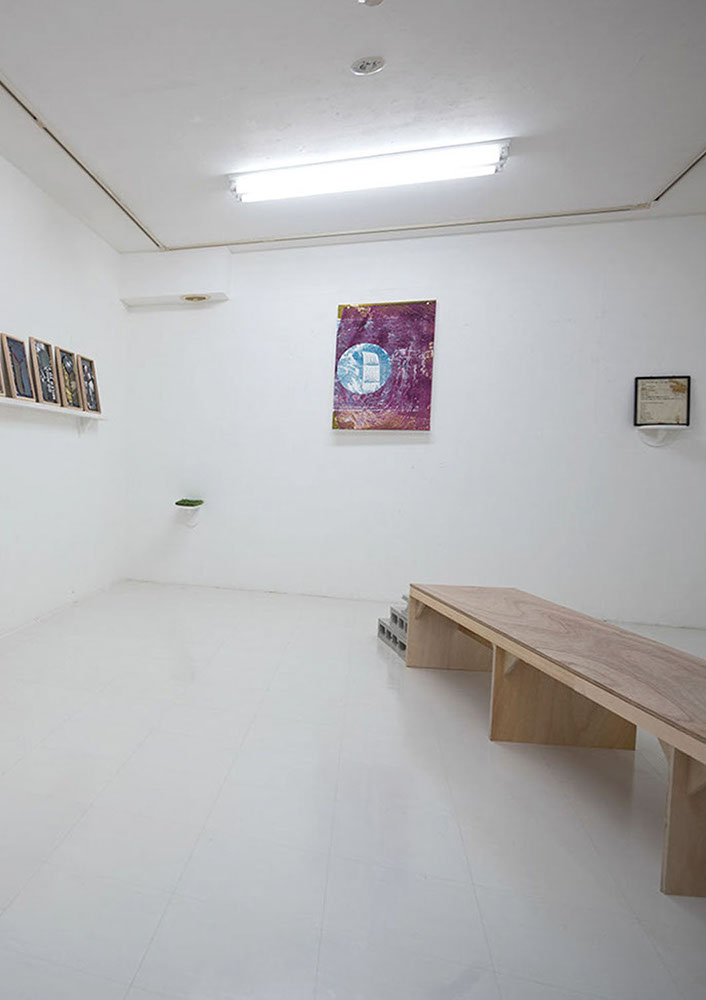
The smaller of the two gallery spaces could serve as a starting point for the exhibition. A key printed image (Arcadia) was placed on axis with the elevated bridge, with the key text mounted on a wall bracket to one side. Eleven small paintings lined one wall.
BRIDGE OF CHOICE

The 12-meter long Bridge of Choice was both a pathway and an obstacle. It was made of wood and elevated about 40cm above the floor, leading from the small gallery, through the vestibule, and into the main gallery. The final two meters of the bridge were hinged to pivot in a wide arc, giving access to the sections of the exhibition.
POTATOES
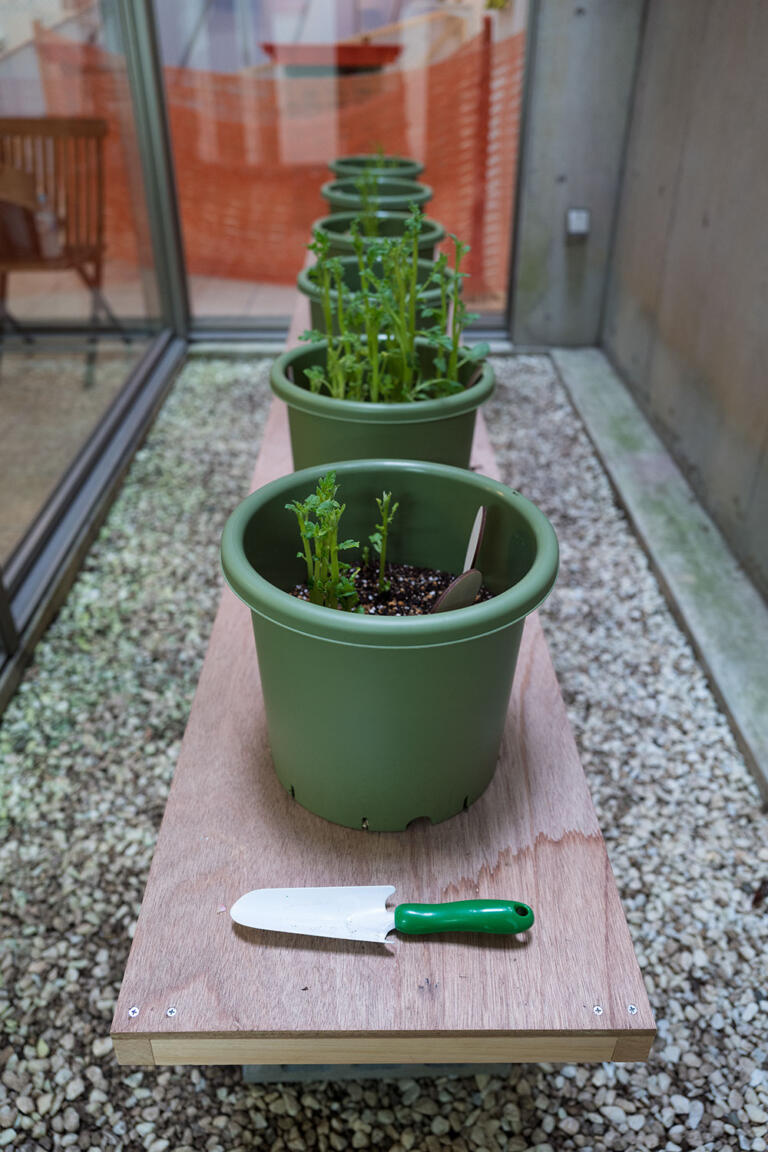
For centuries, potatoes have been a key survival food in times of crisis. Potatoes were grown in six planters were located in the gallery’s drywell area, and were key components of other sections of the exhibition. Visitors could take them home. This component is a continuation of "Victory Gardens for the War on Terror," from Psychoarchaelogy of the Invisible and Unseen.
GUIDE TO THE SECTIONS:
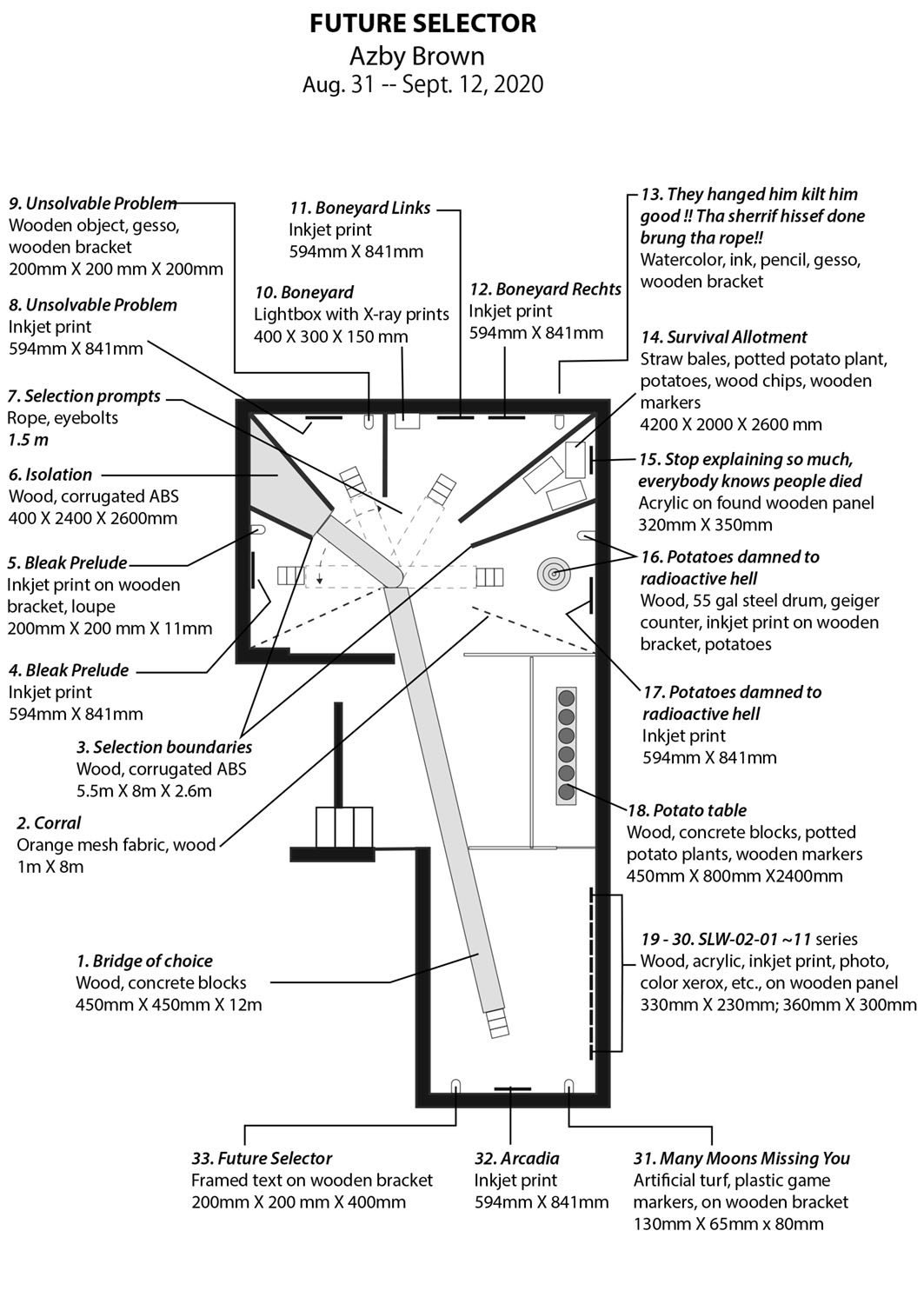
PRINTS
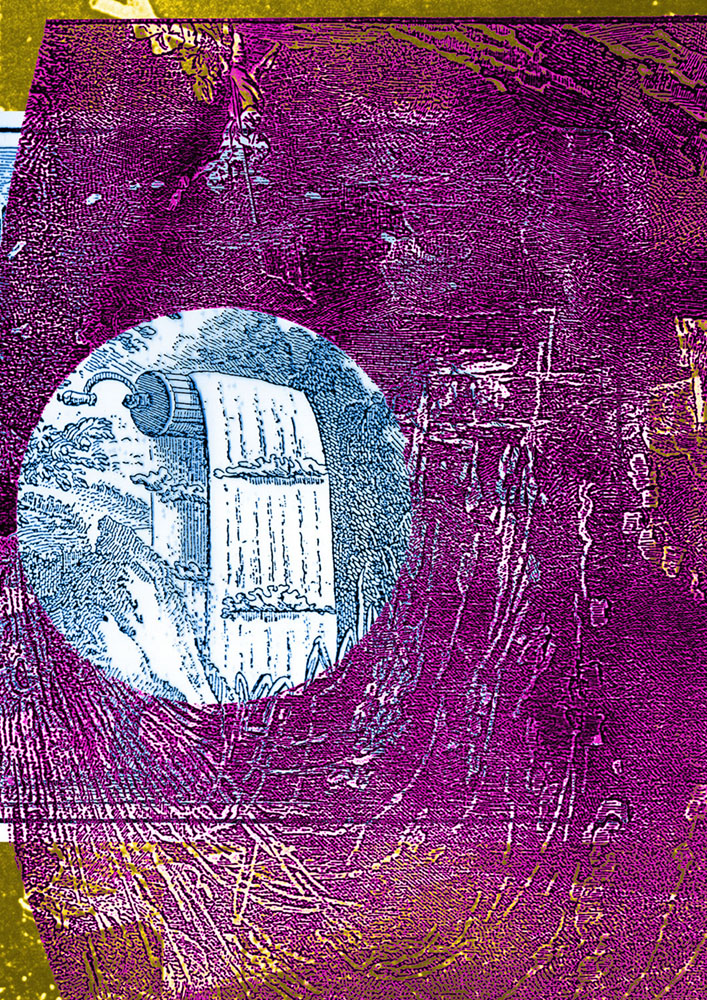
A series of inkjet prints were made utilizing layered imagery generated photographically in the darkroom decades previously. Every print features potatoes.
SMALL PAINTINGS

A series of eleven small paintings were exhibited in the small gallery space. They use acrylic pigment, laser-cut wood, and printed elements.

